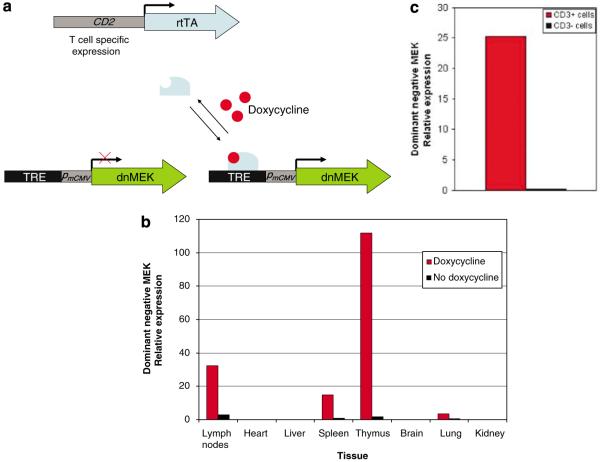Figure 1.
Conditional expression of a dnMEK in T cells. (a) A transgenic mouse strain was generated by subcloning a dnMEK cDNA downstream of a Tet-responsive promoter. This promoter contains the Tet response element (TRE), consisting of seven copies of the 42-bp tet operator sequence (tetO). Breeding with another transgenic mouse containing the reverse tetracycline-regulated transactivator (rtTA) under the control of the CD2 promoter yielded a double-transgenic mouse (dnMEK/CD2-rtTA) capable of T-cell specific expression of the dnMEK. When doxycycline is provided, rtTA binds to the tetO in the Tet-responsive promoter and activates the transcription of the dnMEK. (b) A representative of two independent experiments showing the expression of dominant-negative MEK (dnMEK) in various tissues in dnMEK/CD2-rtTA double-transgenic mice assessed by real-time reverse transcription (RT)–PCR. The expression of the transgene is restricted to the lymph nodes, spleen and thymus and is induced by doxycycline (2 mg ml−1 in drinking water). (c) dnMEK expression is restricted to CD3+ splenocytes. CD3+ and CD3− splenocytes were isolated and incubated for 24 h with doxycycline at a concentration of 1 μg ml−1. RNA was isolated and dnMEK expression was assessed by real-time RT-PCR and normalized to GAPDH (representative of two experiments).

